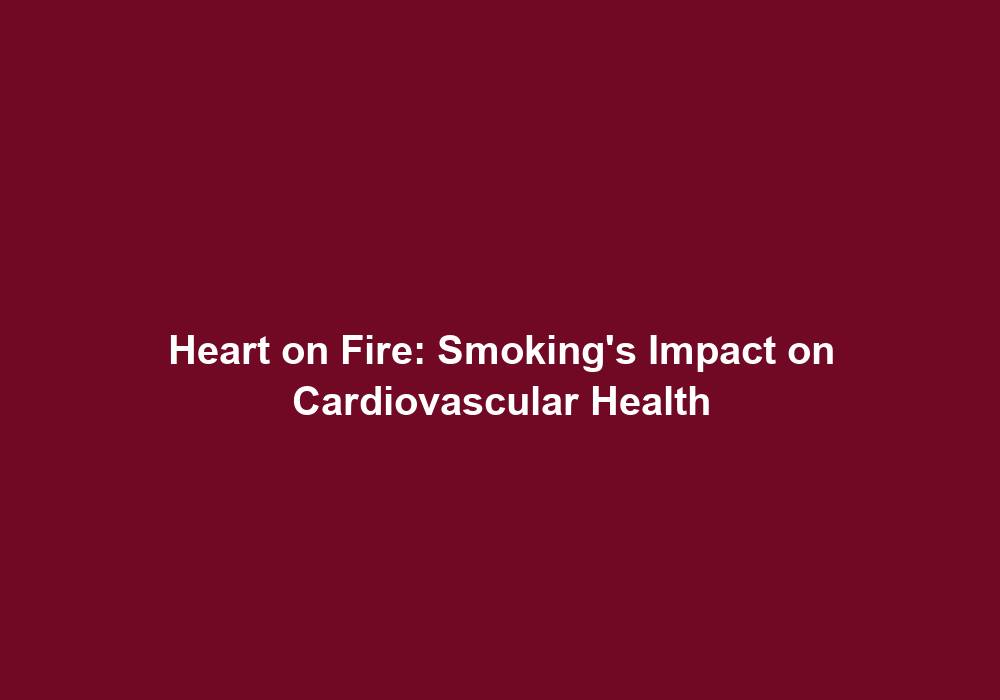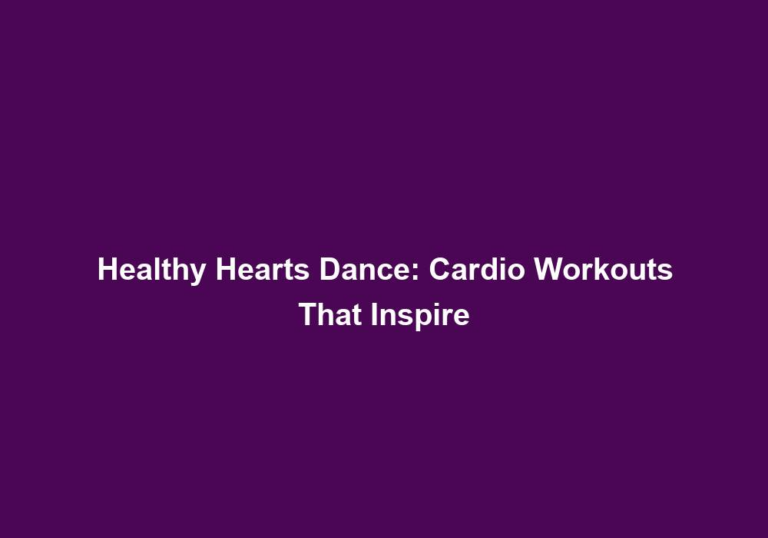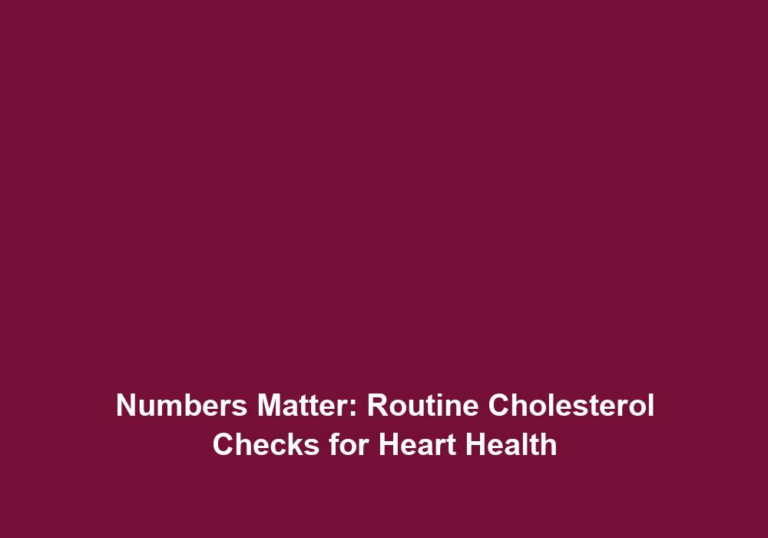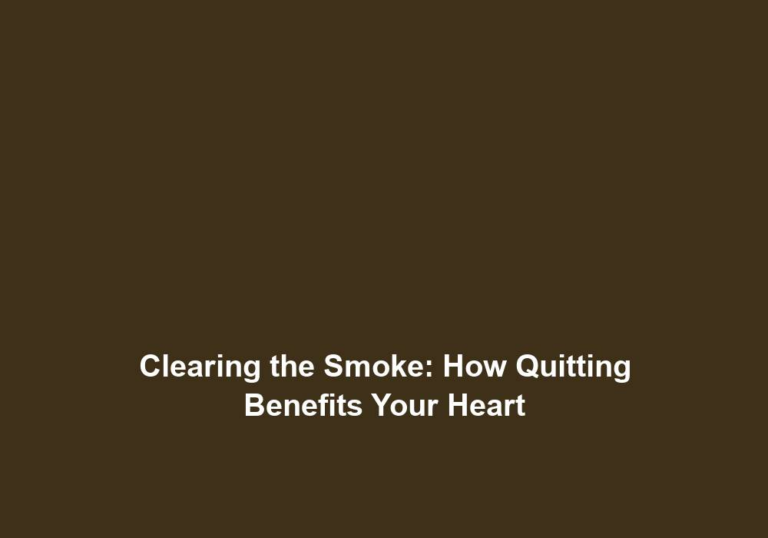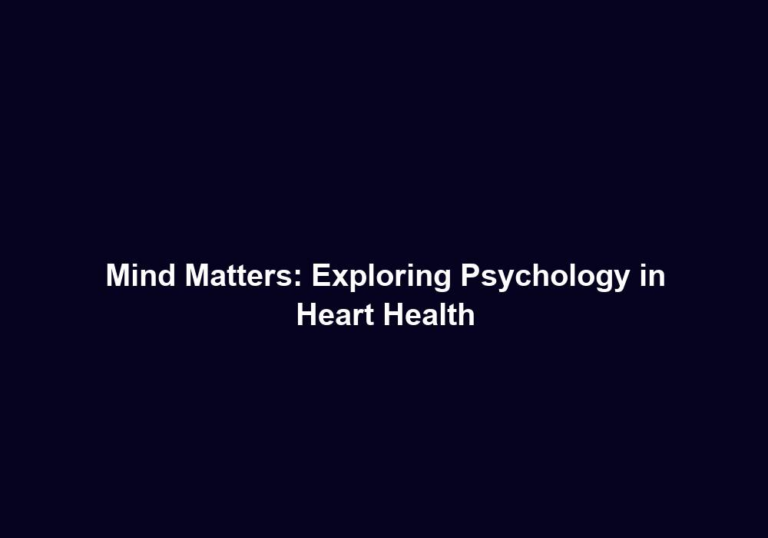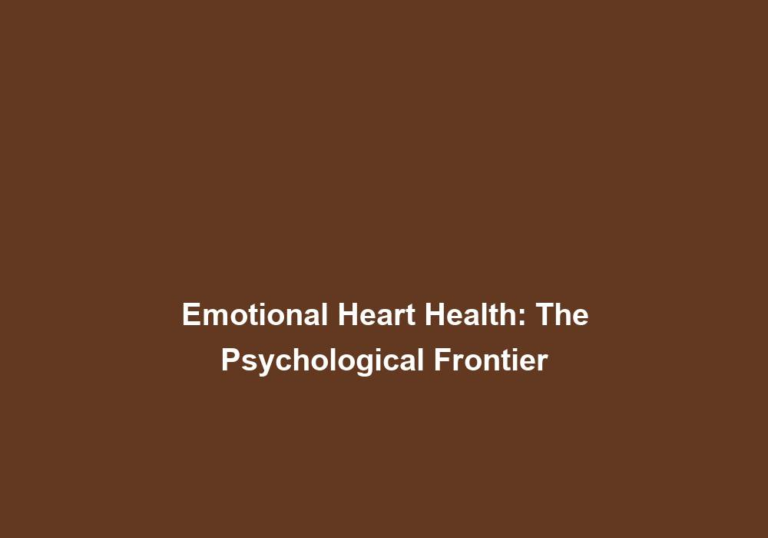Heart on Fire: Smoking’s Impact on Cardiovascular Health
Smoking has long been recognized as a detrimental habit with numerous adverse effects on overall health. In particular, it poses a significant threat to cardiovascular health. The detrimental impact of smoking on the heart and blood vessels cannot be understated, leading to an increased risk of heart disease, heart attacks, stroke, and other cardiovascular conditions. In this article, we will delve into the specifics of how smoking affects cardiovascular health and the importance of quitting this harmful habit.
The Link Between Smoking and Heart Disease
-
Smoking and Coronary Heart Disease:
Research has consistently shown that smoking is a major risk factor for coronary heart disease (CHD). CHD occurs when fatty deposits, known as plaques, build up in the arteries supplying blood to the heart. These plaques can harden and narrow the arteries, reducing blood flow and increasing the risk of a heart attack. Smoking contributes to the development of CHD through the chemicals present in tobacco smoke, such as nicotine, carbon monoxide, and various toxins. These substances promote the formation of plaques and damage the lining of blood vessels, making them more prone to inflammation and narrowing.
Additionally, smoking decreases the levels of high-density lipoprotein (HDL) cholesterol, also known as “good” cholesterol, in the blood. HDL cholesterol helps remove low-density lipoprotein (LDL) cholesterol, or “bad” cholesterol, from the arteries. When the balance between HDL and LDL cholesterol is disrupted, LDL cholesterol can accumulate in the arteries and contribute to the formation of plaques.
Furthermore, smoking increases the risk of blood clots, which can lead to complete blockage of narrowed arteries, resulting in a heart attack. The chemicals in tobacco smoke activate platelets, making them stickier and more likely to clump together, further increasing the risk of clot formation.
-
Smoking and Atherosclerosis:
Atherosclerosis is a condition characterized by the buildup of plaques in the arteries, which can lead to various cardiovascular diseases. Smoking is a significant contributor to the development and progression of atherosclerosis. When inhaled, the harmful substances in cigarette smoke directly damage the inner lining of blood vessels, triggering an inflammatory response. This inflammation attracts immune cells and promotes the formation of fatty deposits, which eventually lead to the development of atherosclerotic plaques.
Moreover, smoking reduces the production of nitric oxide, a molecule that helps relax and widen blood vessels, thereby improving blood flow. With decreased nitric oxide levels, blood vessels become constricted, limiting the flow of oxygen and nutrients to the heart and other organs. This restriction of blood flow can have serious consequences, such as angina (chest pain), and if left untreated, can lead to heart attack or stroke.
-
Smoking and Blood Clots:
Smoking increases the likelihood of blood clot formation, which can have severe consequences for cardiovascular health. Clots can obstruct blood flow in narrowed arteries, potentially leading to heart attacks or strokes. Components within tobacco smoke can activate platelets, small blood cells responsible for clot formation, making them stickier and more likely to clump together. Additionally, smoking hampers the body’s natural ability to dissolve blood clots, further increasing the risk. The combination of increased clot formation and decreased clot dissolution significantly raises the chances of cardiovascular events.
It is worth noting that the risk of cardiovascular complications associated with smoking is not limited to active smokers. Secondhand smoke, also known as environmental tobacco smoke, contains many of the same harmful chemicals as directly inhaled smoke. Therefore, exposure to secondhand smoke can also contribute to the development of cardiovascular diseases, particularly in nonsmokers.
Immediate and Long-Term Effects of Smoking on the Heart
-
Increased Heart Rate and Blood Pressure:
Smoking temporarily raises heart rate and blood pressure, placing additional stress on the heart. These effects occur due to the chemicals in tobacco smoke that stimulate the release of adrenaline, a hormone responsible for the fight or flight response. Adrenaline increases heart rate and constricts blood vessels, leading to elevated blood pressure. Prolonged exposure to nicotine can lead to persistent high blood pressure, which damages the arteries, weakens the heart muscle, and increases the risk of heart disease.
Additionally, the carbon monoxide in cigarette smoke binds to hemoglobin in the blood, reducing its ability to carry oxygen. As a result, the heart needs to pump faster and harder to compensate for the decreased oxygen supply. This increased workload on the heart can lead to hypertrophy, a condition where the heart muscle thickens, becomes less flexible, and is less efficient in pumping blood.
-
Reduced Oxygen Supply:
The carbon monoxide in cigarette smoke competes with oxygen in the blood, reducing the amount of oxygen available to the heart and other organs. This can result in chest pain (angina) and cause the heart to work harder to meet the body’s oxygen demands. Over time, reduced oxygen supply can lead to weakened heart muscles, impairing the heart’s ability to pump blood efficiently and leading to heart failure.
Furthermore, smoking decreases the levels of nitric oxide in the body, as mentioned earlier, which further contributes to reduced oxygen supply. Nitric oxide helps blood vessels relax and widen, improving blood flow and oxygen delivery. When nitric oxide levels are low, blood vessels become constricted, limiting oxygen supply to the heart and other vital organs.
-
Increased Risk of Arrhythmias:
Smoking disrupts the electrical signals that regulate the heartbeat, increasing the risk of arrhythmias. Arrhythmias are abnormal heart rhythms that can range from harmless to life-threatening. Nicotine and other chemicals in tobacco smoke can interfere with the proper functioning of the heart’s electrical system, potentially causing irregular heartbeats, palpitations, or even sudden cardiac arrest.
Additionally, smoking triggers the release of stress hormones, such as adrenaline and cortisol, which can further disturb the heart’s electrical activity. These hormones can cause abnormal heart rhythms by affecting the conduction system that coordinates the heart’s contractions.
Quitting Smoking: A Lifesaving Decision
-
Benefits of Quitting:
Quitting smoking has immense benefits for cardiovascular health. Within minutes of quitting, heart rate and blood pressure begin to decrease, reducing the strain on the heart. As time progresses, within days to weeks, the levels of carbon monoxide in the blood normalize, allowing more oxygen to reach the heart and other vital organs. This improves overall circulation and reduces the risk of blood clots.
Long-term benefits of quitting smoking include a significant reduction in the risk of heart disease, heart attacks, and stroke. The risk gradually decreases over time and continues to improve the longer a person remains smoke-free. By quitting smoking, individuals also experience improvements in lung function, reduced risk of respiratory infections, and an overall improvement in quality of life.
-
Support and Resources for Quitting:
Numerous resources and support systems are available to help individuals quit smoking. These include counseling services, support groups, helplines, and medications that can aid in smoking cessation. It is important for smokers to reach out to healthcare professionals or organizations specialized in smoking cessation to receive personalized guidance and support during their quitting journey.
Behavioral interventions, such as cognitive-behavioral therapy, can help individuals identify triggers and develop coping strategies to overcome cravings and withdrawal symptoms. Nicotine replacement therapies, such as patches, gum, or inhalers, can provide a controlled dose of nicotine to ease withdrawal symptoms. Additionally, prescription medications, such as bupropion and varenicline, can help reduce nicotine cravings and withdrawal symptoms.
In conclusion, smoking has a profound and detrimental impact on cardiovascular health. From increasing the risk of heart disease and atherosclerosis to promoting blood clot formation and disrupting heart rhythm, the harmful chemicals in tobacco smoke wreak havoc on the heart and blood vessels. Quitting smoking is a vital step towards protecting cardiovascular health and reducing the risk of life-threatening conditions. The benefits of quitting are extensive, and various resources exist to assist individuals in their journey towards a smoke-free life. Make the decision today to prioritize your heart’s well-being and embark on a healthier future.

